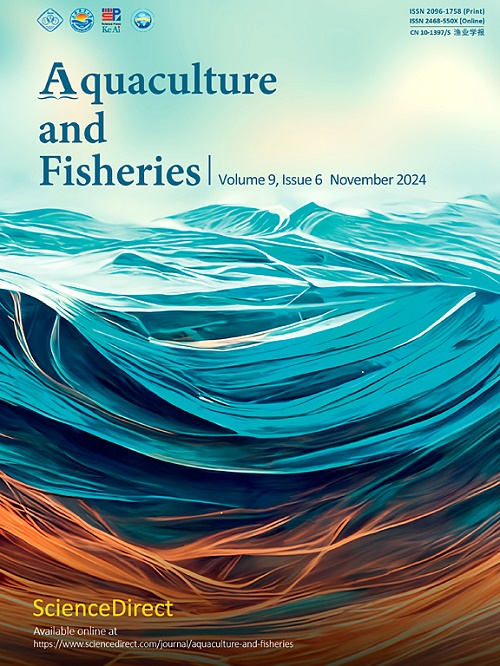C-myc 通过谷氨酰胺介导石斑鱼鳍细胞中 ATP 的产生来调节 RGNNV 的复制
Q1 Agricultural and Biological Sciences
引用次数: 0
摘要
C-myc 是一种原癌基因,在多种疾病中发挥着重要作用。关于 C-myc 与人类病毒之间相关性的研究很多。然而,关于 C-myc 与水生物种病毒相关的研究却非常有限。本研究通过qRT-PCR、细胞免疫荧光和Western印迹测定数据发现,石斑鱼鳍细胞(GF-1)感染红石斑鱼神经坏死病毒(RGNNV)后,C-myc和谷氨酰胺酶(GLS)基因显著上调。敲除C-myc基因后,RGNNV感染的GF-1细胞中RGNNV的GLS、囊膜蛋白(CP)和RNA聚合酶(RdRp)的mRNA和蛋白水平明显降低,而C-myc基因的过表达对这些基因有明显的促进作用,这表明在RGNNV感染的GF-1细胞中病毒的复制和GLS基因受C-myc的正向调控。此外,在无谷氨酰胺培养基中培养 RGNNV 感染的 GF-1 细胞时,补充外源 ATP 可部分恢复病毒复制,这证实谷氨酰胺被分解为 ATP 为病毒复制提供能量。进一步的研究证实,过表达 C-myc 可增加正常细胞中的 ATP 含量。总之,这些数据表明,C-myc 基因的激活通过调节 GLS 的表达来驱动谷氨酰胺的分解,从而影响病毒的复制。本文章由计算机程序翻译,如有差异,请以英文原文为准。
C-myc modulates the replication of RGNNV via glutamine-mediated ATP production in grouper fin cells
C-myc is a proto-oncogene that plays an important role in a variety of diseases. There were a lot of research on the correlation between C-myc and human viruses. However, the study about C-myc related to aquatic species virus is very limited. In the present study, the qRT-PCR, cellular immunofluorescence and western blotting determination data reported that C-myc and glutaminase (GLS) genes were significantly upregulated when grouper fin cells (GF-1) were infected with red grouper nervous necrosis virus (RGNNV). After knocking down the C-myc gene, the mRNA and protein levels of GLS, capsid protein (CP) and RNA polymerase (RdRp) of RGNNV were significantly reduced in RGNNV-infected GF-1 cells and the overexpression of the C-myc gene remarkably promoted these genes, which indicated that the replication of the virus and GLS gene were positively regulated by C-myc in RGNNV-infected GF-1 cells. In addition, supplementation of exogenous ATP can partially restore viral replication when RGNNV-infected GF-1 cells were cultured in glutamine-free medium, which confirmed that the glutamine was decomposed into ATP to provide energy for viral replication. Further studies confirmed that overexpression of C-myc can increase the content of ATP in normal cells. To sum up, these data suggested that activation of C-myc gene affected viral replication by regulating GLS expression to drive glutamine dissolution.
求助全文
通过发布文献求助,成功后即可免费获取论文全文。
去求助
来源期刊

Aquaculture and Fisheries
Agricultural and Biological Sciences-Aquatic Science
CiteScore
7.50
自引率
0.00%
发文量
54
审稿时长
48 days
期刊介绍:
 求助内容:
求助内容: 应助结果提醒方式:
应助结果提醒方式:


